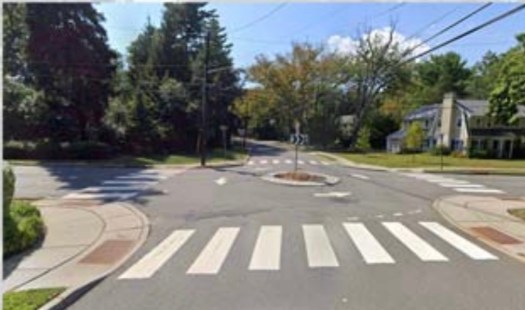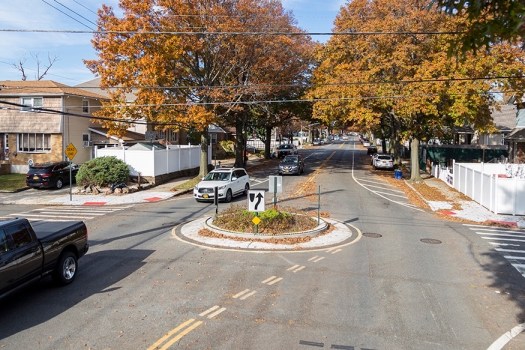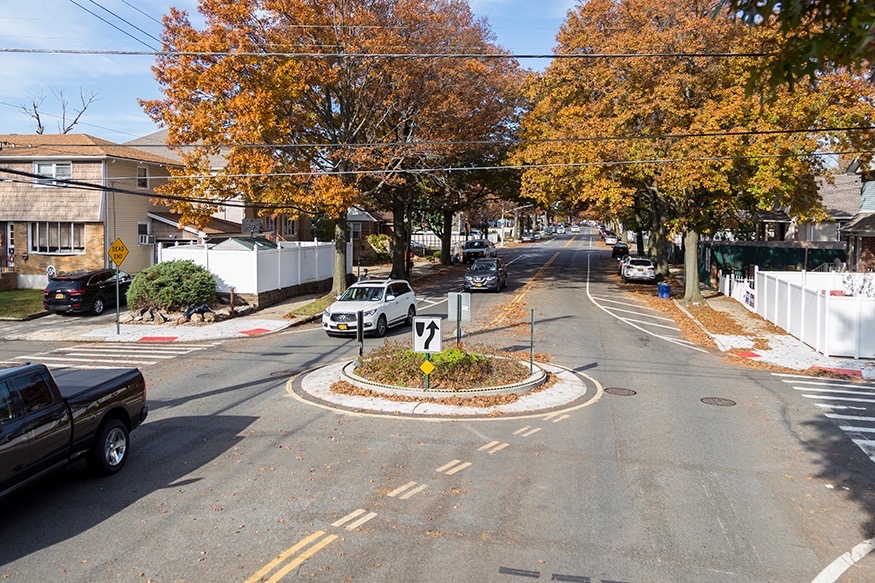No surprise there.
Our streets are especially dangerous for people walking or rolling. There’s an ongoing need to build more and better protected biking and walking infrastructure. We need to enable people to get around safely without dependency on cars, whether walking, riding a bike, riding a scooter, skateboard, or using a wheelchair.
What can be done right NOw?
We must design physical elements on our streets to deter speeding.
Bicyclists, scooter riders, skateboarders, elderly, children and their families are the most vulnerable road users. Asbury Park Complete Streets Coalition is committed to helping to make our streets safe for everyone to get around safely – if streets are safe for an 8-year-old or an 80-year-old, they are safe for all.
Asbury Park is the recipient of a generous grant of 500,000 from Safe Routes To School for a project utilizing roundabouts as a traffic calming method to prevent speeding.
Safe Routes to School (SRTS) safety and access improvements will provide traffic calming measures on Third Avenue and Fourth Avenue between Prospect Avenue and Comstock Street. The project Design and Construction cost is funded by federal funds administered through NJDOT Local Aid Transportation Alternatives (TA) Program and Design Assistance.
The SRTS funds are intended to install mini-roundabouts in key locations where speeding has been a serious problem.

How effective are mini roundabouts?
The city of Carmel, Indiana has more than 100 roundabouts and is installing more. Studies have consistently found roundabouts to be safer than conventional stop signs or signal systems. In fact, replacing signals with roundabouts has been shown to decrease an intersection’s number of traffic fatalities by 90 percent (PDF).
- Mini-roundabouts throughout the US are showing promising results as safety-conscious, cost-effective solutions, replacing less efficient all-way and stop-controlled intersections.
- Mini-roundabouts are used where the existing speed limit is 25 mph or less and in urban, suburban and smaller municipal environments.


Bottom line:
“Traffic calming is a full range of methods to slow cars, but not necessarily ban them, as they move through commercial and residential neighborhoods. The benefit for pedestrians and bicyclists is that cars now drive at speeds that are safer and more compatible to walking and bicycling. There is, in fact, a kind of equilibrium among all of the uses of a street, so no one mode can dominate at the expense of another.”
For a deeper dive, take a look at the USDOT Federal Highway Administration Lesson In Traffic Calming:
FHWA COURSE ON BICYCLE AND PEDESTRIAN TRANSPORTATION describes objectives, considerations, and various methods to calm traffic, such as circles and roundabouts, medians, bumps, speed humps. raised crosswalks. raised intersections, bump outs, curb extensions, and more. All of these devices are intended to #slowthecars, and are carefully determined to be applied in areas in which they will be most effective.
How you can help:
- Subscribe to this website to stay informed.
- Share your email to APCSC mailing list/Google Group: apcpompletestreets@gmail.com.
- Call and email Mayor and City Council to offer your support for safe streets for the most vulnerable, and using traffic calming methods, especially mini-roundabouts.
- Talk to neighbors and friends.
- As always we welcome your constructive comments!


